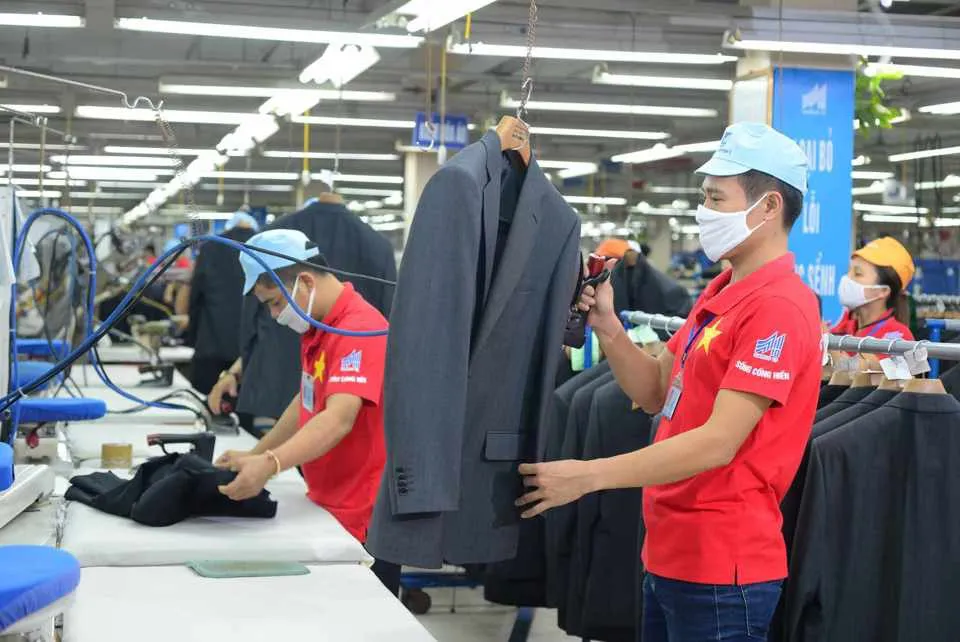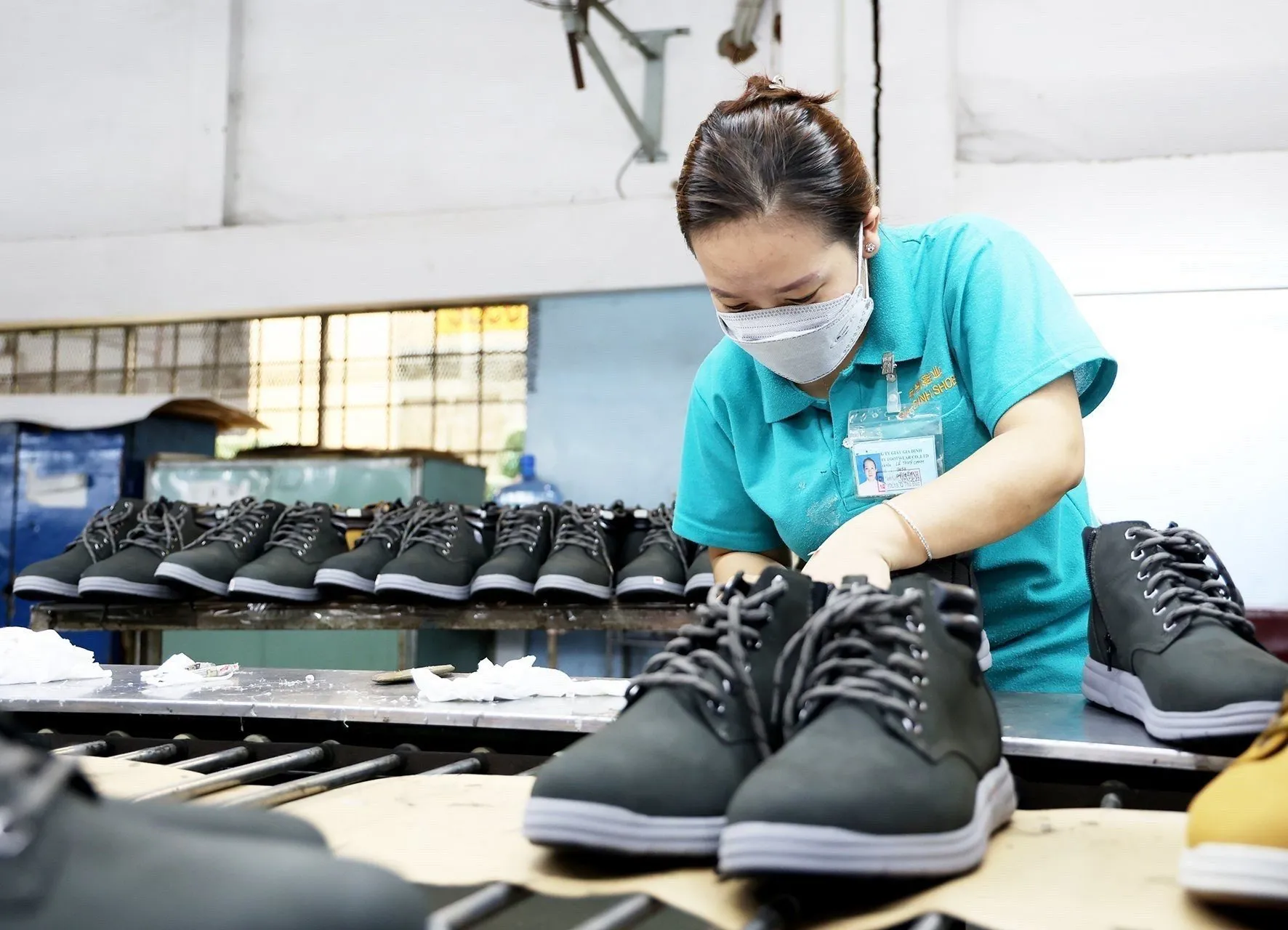How will Vietnamese exporters brace for US tariffs?
THE HANOI TIMES — Vietnamese exporters face a critical turning point as the US imposes tariffs of up to 46% on imports. Key sectors like textiles, footwear, electronics, and furniture are scrambling to adapt by renegotiating prices, diversifying markets, and strengthening supply chains to mitigate the impact, local insiders have said.
Tran Nhu Tung, Chairman of Thanh Cong Textile-Garment Investment-Trading JSC and Vice Chairman of the Vietnam Textile and Apparel Association (VITAS), said the industry is in a state of anxiety.
"Since April 3, I've been getting calls non-stop. Everyone's talking about one thing: the US tariff hike," he told Labor Newspaper. "At a flat rate of 46%, we fear a dramatic drop in orders and purchasing power in the US."
Tung revealed that his firm is immediately renegotiating with American clients on pricing and cost sharing. He stressed the urgent need to diversify export markets, particularly to the European Union (EU) via the EU-Vietnam Free Trade Agreement (EVFTA), and streamline operations to remain competitive.

Local workers at the Garco 10 factory. Photo: Khac Kien/The Hanoi Times
Le Tien Truong, Chairman of the Vietnam National Textile and Garment Group (Vinatex), warned that while the 46% tariff rate was a cause for concern, it would not be applied to all products.
What matters most is not only the increase in tariffs on Vietnamese exports but also the fact that they are much higher than those of its competitors. For example, tariffs on Vietnam’s textiles will rise from 18% to 46%, an increase of 28 percentage points. At the same time, some competing countries that previously benefited from zero tariffs under the Generalized System of Preferences (GSP) could see increases of 30%-36%.
"This would lead brands to move their supply chains elsewhere. The immediate effect would be a drop in consumer and buyer confidence, which could temporarily reduce global demand," Truong told Hanoimoi Newspaper.
Meanwhile, Nguyen Thi Phuong Thao, CEO of Garment 10 Corporation (Garco 10), warned that the new tariffs could drive up costs, fuel inflation, and weaken demand, leading to fewer export orders.
"Garco 10 is anticipating a 10% drop in orders," she said, urging the government to help with supportive tax and tariff policies.
However, Garco 10 has long prepared for such challenges by diversifying its export markets and reducing its dependence on the US, which currently accounts for 60% of its output. The company has expanded its presence in Japan, Australia, and the EU to mitigate risks.
Meanwhile, Vu Duc Giang, Chairman of VITAS, pointed out that Vietnamese exports have faced high tariffs in the past. "Vietnam doesn't have a free trade agreement with the US. Some of our textile products already face tariffs of up to 27%. So it's not a total shock," he said.
However, he urged local firms to wait for product-specific tariff schedules and avoid overdependence on a single market.
Strategy and supply chain resilience

A worker finishes making a shoe at the Gia Dinh Group JSC factory. Photo: Gia Dinh Group JSC
Scott McDonald, Lecturer in Logistics and Supply Chain Management at RMIT University Vietnam, said Vietnamese exporters need to respond with agility.
"These new tariffs represent a serious price disadvantage for Vietnamese goods in the US market," McDonald said. "To remain competitive, exporters must urgently reassess their supply chains, product classifications, and market strategies."
He recommends capitalizing on Vietnam's membership in trade agreements such as the Comprehensive and Progressive Agreement for Trans-Pacific Partnership (CPTPP), the EU-Vietnam Free Trade Agreement (EVFTA), the Regional Comprehensive Economic Partnership (RCEP), and the UK-Vietnam Free Trade Agreement (UKVFTA) to shift export focus to lower tariff markets.
In some cases, rerouting supply chains through countries like Mexico or Canada, which are exempt from the new US tariffs, could also provide relief. “Flexibility is the key,” McDonald added. “Firms that diversify and innovate will not only survive but may strengthen their position globally.”
Many local insiders are calling for continued dialogue between the Vietnamese and US governments to seek tariff reductions or exemptions for critical product categories.
"The government has been proactive in negotiating trade agreements. Now we hope it can step in to support the affected sectors," said Thao of Garco 10.
As global trade dynamics shift, experts say this moment could be a turning point for Vietnam's export strategy. Companies that act quickly to diversify markets, optimize production, and strengthen their value chains are more likely to weather the storm and perhaps emerge stronger.
In 2024, Vietnam’s exports to the US surged to US$119.6 billion, a 23.1% increase from the previous year, according to Vietnam's General Department of Customs. However, maintaining this momentum in the face of rising tariffs will require adaptability and strategic planning.










